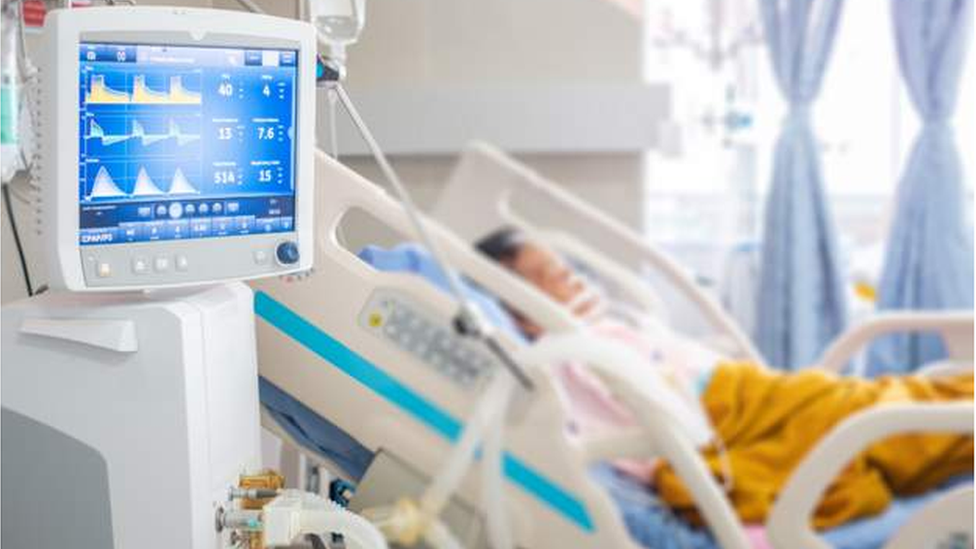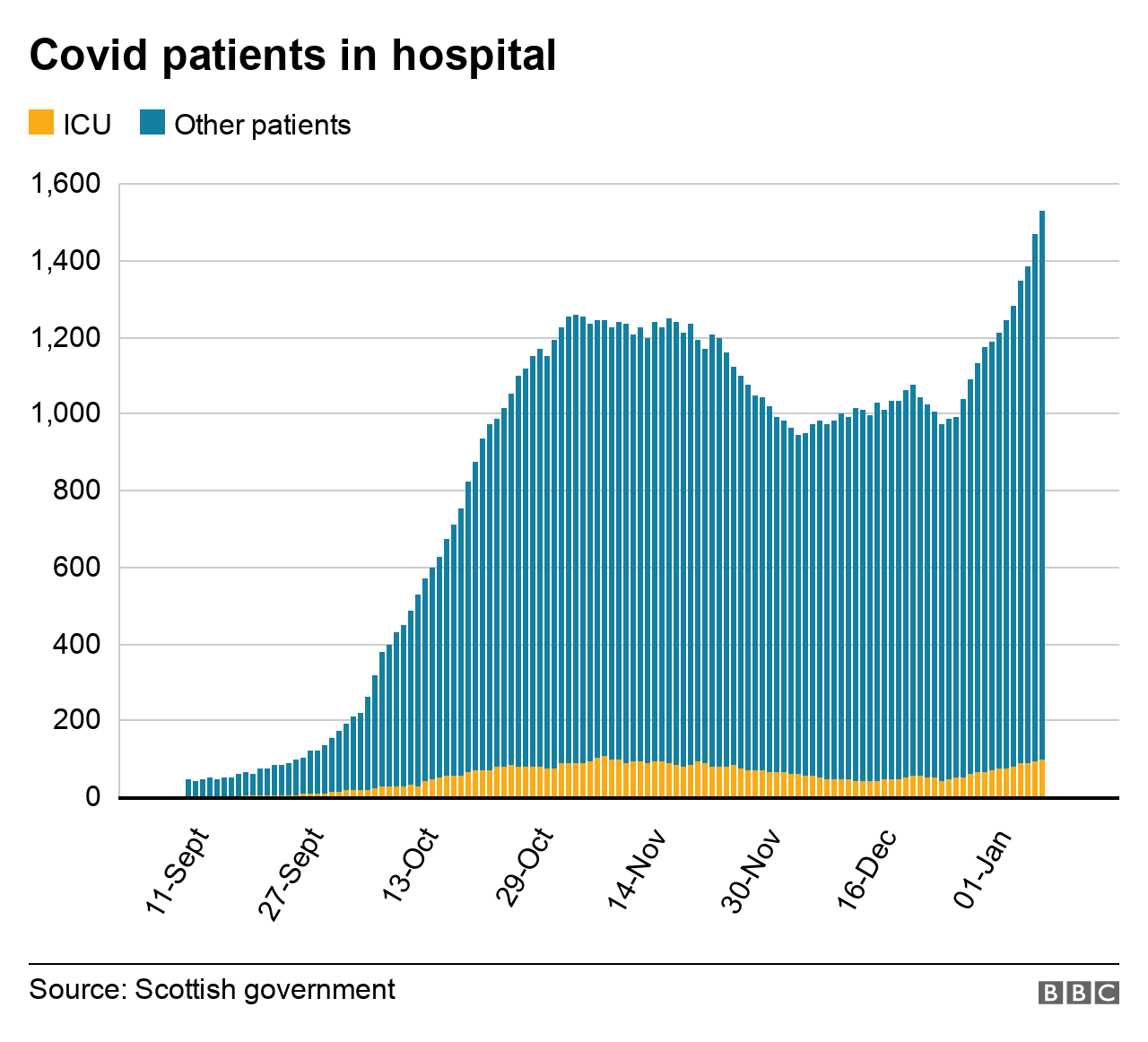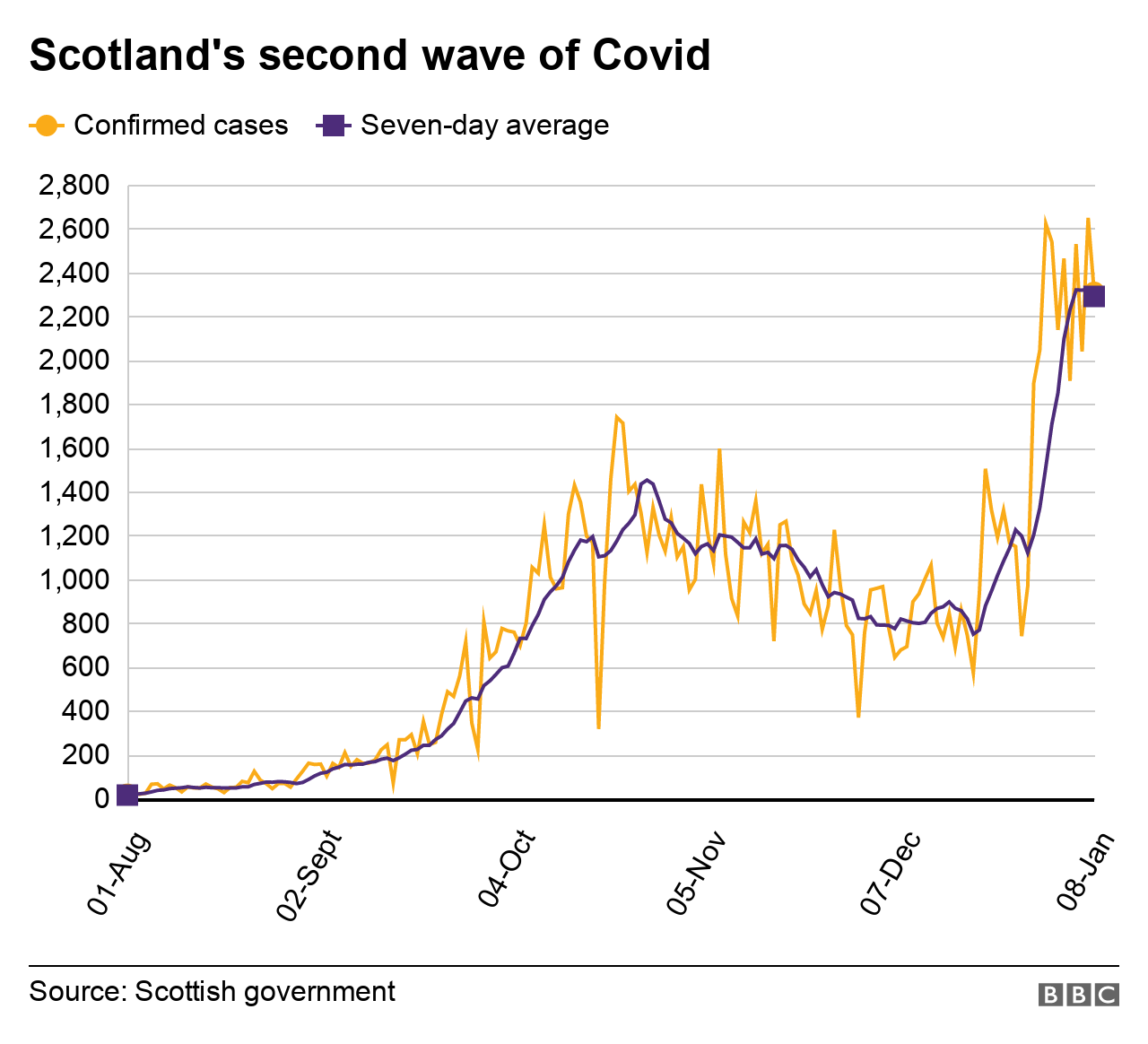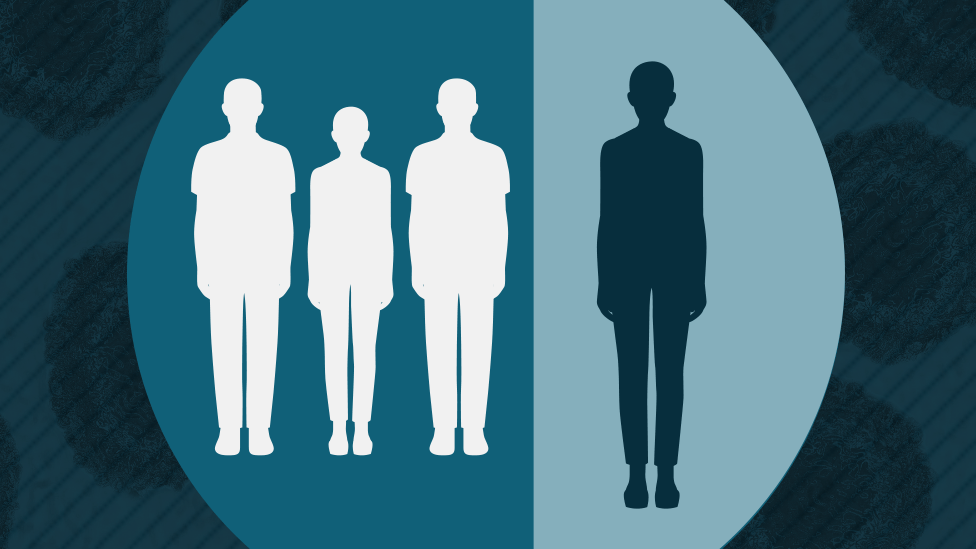Covid in Scotland: How do hospital numbers compare with April's peak?
- Published

There are now more people in Scottish hospitals with Covid than there were at the peak of the first wave in April.
On the day the first lockdown started at the end of March last year there were 329 in hospital with Covid.
The numbers rose steeply and by 20 April there were 1,520 patients in hospital with Covid in Scotland.
The latest daily figures show there are now 1,530 in hospital, up 340 in the past week.
Fewer people in intensive care
In addition, there are now 102 people in intensive care units in Scotland being treated for Covid - which is up 29 on a week ago.
The number of people in intensive care is still significantly lower than the April peak, which was 208.

First Minister Nicola Sturgeon said on Monday that this partly reflected the fact that treatment of Covid had improved significantly.
But, even so, the total number of patients in intensive care in Scotland is already above normal winter levels.
Indeed, all mainland health boards have now exceeded their normal intensive care unit capacity.
New variant spreading quickly
The increased spread of the virus is attributed to the new variant, which is up to 70% more transmissible than previous strains.
The new strain now accounts for half of cases in Scotland. A week ago the figure was 42.8% and a month earlier it was less than 6% of all UK cases.
On 19 December, when concerns over the new strain led to announcements that mainland Scotland would be moving to level four a week later, the cumulative seven-day incidence per 100,000 people was 136. It has since risen to more than 250.

The figure for England is above 500 per 100,000 and in some regions it is much higher.
The highest rate in Scotland is in Inverclyde at almost 573 per 100,000. Dumfries and Galloway, which previously recorded low case rates, has increased by more than 400 in the past week to 552 cases per 100,000.
Modelling the new strain
The increased number of people in hospital and the rapid spread of the new strain led the Scottish government to take action and impose a lockdown similar to the one in March last year.
On Monday, it published a paper which showed its "modelling" of three scenarios, external on the transmission of the disease without a stricter lockdown.
Scenario two, the one considered most likely, showed the number of people in hospital with Covid reaching the April peak in the week commencing 18 January.
In fact, the figure was reached on 8 January.
The scenario then sees the number of cases almost double again over the next two weeks to 2,900.
The NHS had put the Covid surge capacity in Scotland at 3,656 hospital beds but this was revised down to 2,400 for the winter to account for "additional seasonal pressures including weather-related issues and increased staff absence".
In the evidence paper, Scenario 3, the most pessimistic outcome, which factored in an estimate of Christmas spread, suggested there could be 8,300 in hospital by the week commencing 1 February.
There are fewer than 13,000 hospitals beds in the whole of the NHS in Scotland and occupancy in normal winter months is close to 90%.
The first minister said NHS services were coping at present, although the pressure on frontline staff was considerable.
However, the position in some areas is fragile and getting more challenging.
Ms Sturgeon said that the increase in case numbers seen in past two weeks could not continue unchecked and that was why the lockdown had been imposed.
Without it, she said, there would be a real risk of the NHS being overwhelmed.


Related topics
- Published13 January 2023
